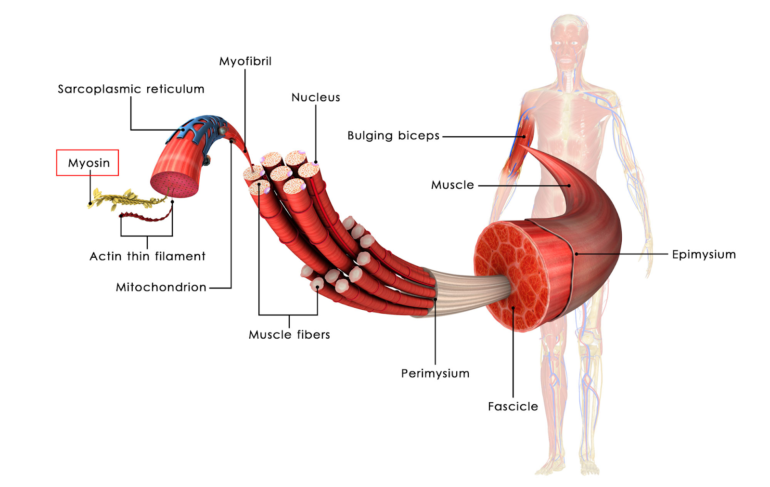Different types of exercise encourage the formation of different types of muscle fibers, or the cells that make up your muscles. Slow twitch muscle fibers support endurance activities like long-distance running, while fast twitch fibers are needed for short, powerful movements such as those involved in heavy weight lifting. Now, researchers in Japan have shed new light on a family of proteins involved in the development of these muscle fiber types.
In a new study published in Cell Reports, researchers from University of Tsukuba have elucidated the role of a group of proteins known as the large Maf transcription factor family in the specification of fast twitch muscle fibers.
Aerobic exercise encourages muscle fibers to adapt a “slow” identity, while prolonged inactivity—such as that experienced by astronauts on the International Space Station—encourages muscles fibers to adapt a “fast” identity. Previously, the research team from University of Tsukuba discovered that expression of the large Maf family is affected by different gravitational loads. These findings led the researchers to further investigate the role of the large Maf family in the development of muscle fiber types.
“We found that animals subjected to a model of microgravity expressed significantly higher levels of large Mafs in their skeletal muscles,” says senior author of the study Professor Satoru Takahashi. “This seemed to indicate that the large Mafs are induced in muscles experiencing slow-to-fast muscle fiber transition.”
The researchers designed a mouse model in which three Maf family members, Mafa, Mafb, and Maf, were inactivated in the skeletal muscles. These “triple knockout” (TKO) mice exhibited a significant reduction in fast twitch muscle mass compared with control mice, while slow twitch muscle mass appeared to be comparable in TKO and control mice. Additionally, TKO mice lacked a specific subtype of fast twitch fiber, known as type IIb, in the fast twitch muscles.
“The TKO mice had significantly lower average grip strength, but could run longer on a treadmill than control mice, implying that more fast-to-slow muscle fiber conversion had occurred in the absence of large Maf expression,” says lead author of the study Professor Ryo Fujita. “Furthermore, overexpression of the large Mafs in the leg muscles of mice led to a significant increase in type IIb myofibers.”
This study is the first to identify the large Maf proteins as specific regulators of type IIb fast twitch muscle fiber formation. This finding may give new insight on how fast-to-slow muscle fiber transition occurs during aging in mammals and also reveal potential targets for the development of therapies for the treatment of muscular disorders involving fast twitch muscle fibers.
More information:
Shunya Sadaki et al, Large Maf transcription factor family is a major regulator of fast type IIb myofiber determination, Cell Reports (2023). DOI: 10.1016/j.celrep.2023.112289
Provided by
University of Tsukuba
Citation:
The fast and the fibrous: Developing the muscles you need for speed (2023, March 24)
